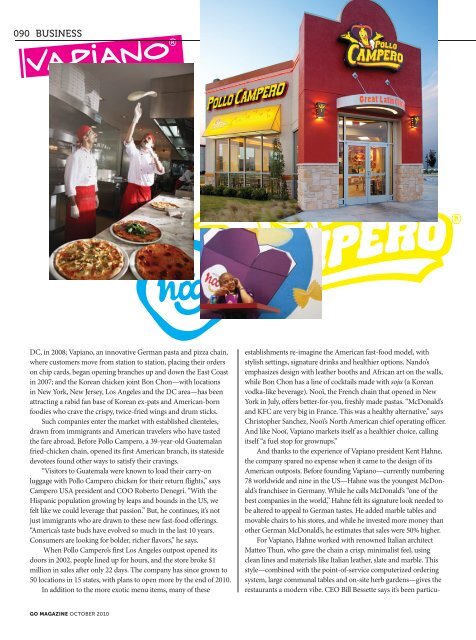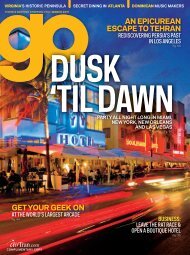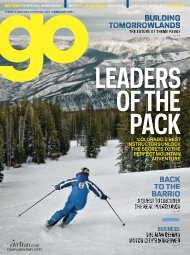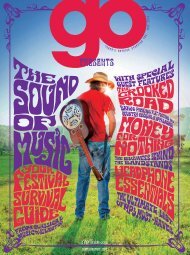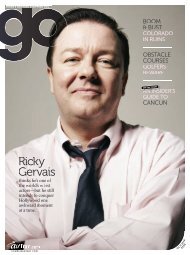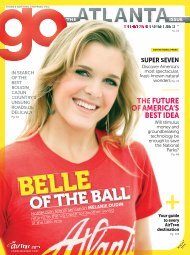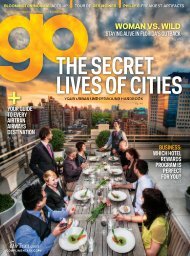You also want an ePaper? Increase the reach of your titles
YUMPU automatically turns print PDFs into web optimized ePapers that Google loves.
090<br />
BUSINESS<br />
DC, in 2008; Vapiano, an innovative German pasta and pizza chain,<br />
where customers move from station to station, placing their orders<br />
on chip cards, began opening branches up and down the East Coast<br />
in 2007; and the Korean chicken joint Bon Chon—with locations<br />
in New York, New Jersey, Los Angeles and the DC area—has been<br />
attracting a rabid fan base of Korean ex-pats and American-born<br />
foodies who crave the crispy, twice-fried wings and drum sticks.<br />
Such companies enter the market with established clienteles,<br />
drawn from immigrants and American travelers who have tasted<br />
the fare abroad. Before Pollo Campero, a 39-year-old Guatemalan<br />
fried-chicken chain, opened its first American branch, its stateside<br />
devotees found other ways to satisfy their cravings.<br />
“Visitors to Guatemala were known to load their carry-on<br />
luggage with Pollo Campero chicken for their return flights,” says<br />
Campero USA president and COO Roberto Denegri. “With the<br />
Hispanic population growing by leaps and bounds in the US, we<br />
felt like we could leverage that passion.” But, he continues, it’s not<br />
just immigrants who are drawn to these new fast-food offerings.<br />
“America’s taste buds have evolved so much in the last 10 years.<br />
Consumers are looking for bolder, richer flavors,” he says.<br />
When Pollo Campero’s first Los Angeles outpost opened its<br />
doors in 2002, people lined up for hours, and the store broke $1<br />
million in sales after only 22 days. The company has since grown to<br />
50 locations in 15 states, with plans to open more by the end of <strong>2010</strong>.<br />
In addition to the more exotic menu items, many of these<br />
GO MAGAZINE OCTOBER <strong>2010</strong><br />
establishments re-imagine the American fast-food model, with<br />
stylish settings, signature drinks and healthier options. Nando’s<br />
emphasizes design with leather booths and African art on the walls,<br />
while Bon Chon has a line of cocktails made with soju (a Korean<br />
vodka-like beverage). Nooï, the French chain that opened in New<br />
York in July, offers better-for-you, freshly made pastas. “McDonald’s<br />
and KFC are very big in France. This was a healthy alternative,” says<br />
Christopher Sanchez, Nooï’s North American chief operating officer.<br />
And like Nooï, Vapiano markets itself as a healthier choice, calling<br />
itself “a fuel stop for grownups.”<br />
And thanks to the experience of Vapiano president Kent Hahne,<br />
the company spared no expense when it came to the design of its<br />
American outposts. Before founding Vapiano—currently numbering<br />
78 worldwide and nine in the US—Hahne was the youngest McDonald’s<br />
franchisee in Germany. While he calls McDonald’s “one of the<br />
best companies in the world,” Hahne felt its signature look needed to<br />
be altered to appeal to German tastes. He added marble tables and<br />
movable chairs to his stores, and while he invested more money than<br />
other German McDonald’s, he estimates that sales were 50% higher.<br />
For Vapiano, Hahne worked with renowned Italian architect<br />
Matteo Thun, who gave the chain a crisp, minimalist feel, using<br />
clean lines and materials like Italian leather, slate and marble. This<br />
style—combined with the point-of-service computerized ordering<br />
system, large communal tables and on-site herb gardens—gives the<br />
restaurants a modern vibe. CEO Bill Bessette says it’s been particu-


